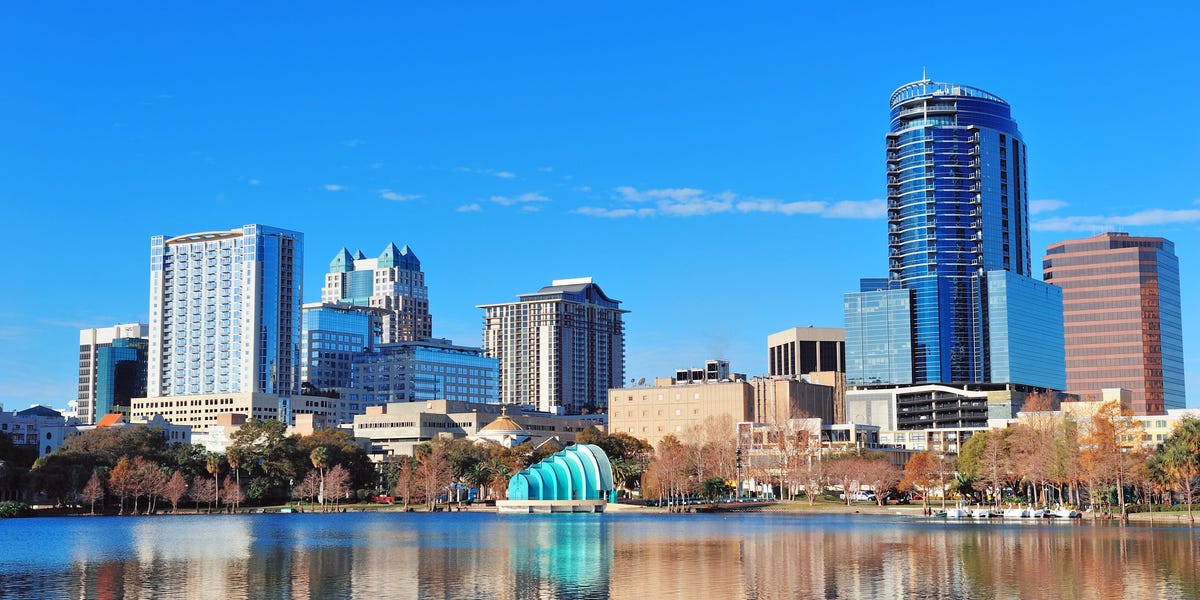13 Cities Where Hiring Is Picking up: Florida, Texas, Midsize Cities

- Hiring is increasing in small cities and large centers in Florida and Texas, according to a Gusto analysis.
- The pandemic-driven trend toward remote work has driven jobs away from the Northeast coasts and California.
- Cities like Orlando, San Antonio and Houston saw their share of hiring increase significantly.
The economy is heading south in the best possible way.
The Rocky Mountains and coastal Southeast are experiencing a major boon in economic prosperity, with more and more affordable housing and good-paying jobs. And the South has become a major hub of the American economy, with population growth booming.
Now, new data shows that hiring is picking up in these new U.S. hubs – and leaving behind the traditional pillars of employment on the coasts.
Jobs are moving from the Northeast and California coasts to small and medium-sized cities nationwide, as well as to big cities in Florida and Texas, according to a Gusto analysis of more than 30,000 companies on its platform. The data analyzed the share of hiring between January 2018 and December 2023 in small and medium-sized businesses.
In large coastal cities, which have historically seen high hiring rates, particularly for white-collar workers, the pandemic has led thousands of people to relocate to areas with lower costs of living, all while working remotely. While large coastal cities accounted for 35% of hires before March 2020, this percentage now stands at around 29%. This is explained by the decline in hiring in New York, Los Angeles and Seattle.
For example, San Francisco lost 2.7 percentage points in its hiring share when comparing pre-Covid to mid-2022 and 2023. A 2023 analysis from the Economic Innovation Group of population estimates from the Census reveals that San Francisco saw a population decline of nearly 8% between 2020 and 2022, while San Jose saw losses greater than 4%.
Washington, D.C., was the only traditional coastal economic center analyzed by Gusto that saw an increase in the share of hiring between 2018 and 2023, perhaps driven by growth in in-person government worker hiring. Recent employment reports show that government is one of the fastest growing hiring sectors.
Meanwhile, cities in Florida and Texas are experiencing a hiring surge. Orlando saw a 30.6% change in hiring share, while San Antonio was 23.1%.
Miami and Austin, which have both attracted thousands of remote workers in industries such as technology, saw modest hiring gains during the first two years of the pandemic, although hiring shares have stabilized between mid-2022 and 2023.
Hiring patterns are another data point showing how much the pandemic has transformed America’s economic geography. The unique financial situation of 2020, where mortgage interest rates fell and Americans were able to work from anywhere, created its own pandemic boomtowns and a home-buying frenzy. Workers flocked to places like Florida and Texas, where housing was cheaper and the climate more tolerable than in the coastal cities where they had previously been forced. Now, this has led to its own change in which fields are hiring.
Similarly, small towns living in the shadow of large urban centers have entered the spotlight in post-pandemic reconfiguration. Areas like St. Louis and Boise have experienced their own hiring booms, and both have faced an influx of newcomers. And these movers are potentially looking to settle down: A surge in pandemic movers has reshaped the Midwest dating scene with a new pool of singles — and a new emphasis on finding one.
“We’re very busy and we’re recruiting people. I work seven days a week,” Courtney Quinlan, CEO and matchmaker of Midwest Matchmaking, previously told Business Insider. She added: “I never have a day off. And I love it.”
Did you leave the coast for Florida, Texas, or a smaller city? Contact these journalists at nsheidlower@insider.com And jkaplan@insider.com.
businessinsider





